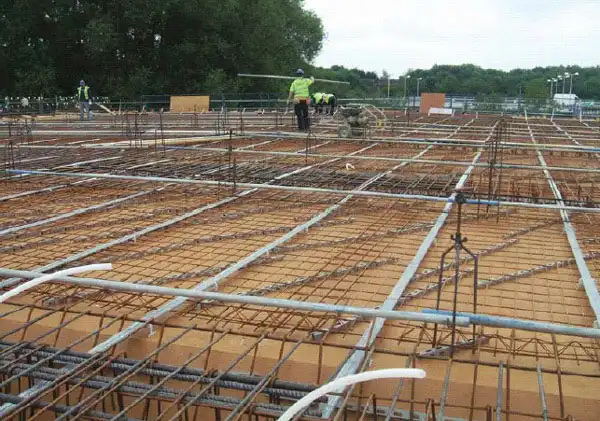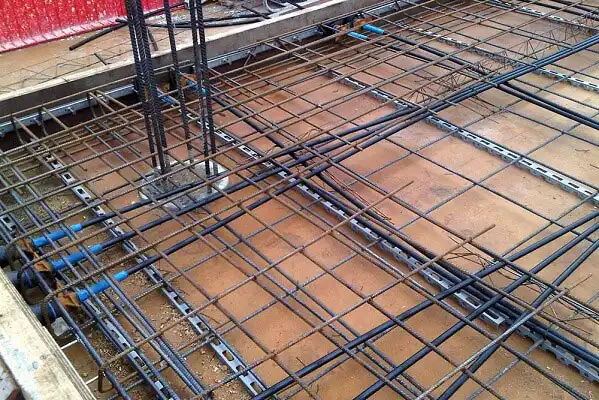Post-tensioning frequently solves design and construction challenges that other construction methods simply cannot. It is achieved by casting concrete into pre-assembled forms in combination with rebar and steel cable (strand) reinforcement. These cables are tensioned (stretched) to approximately three-quarters of their ultimate strength. Once the concrete cures to its required strength, the tensioning is released. The steel cables reacting to the release, transfer the tensile stresses into the concrete, rendering an even stronger structural component. When it comes to posting tensioning, there is often a dilemma on whether to go for a bonded or unbonded post-tensioning system.

— Advertisement —
In post-tensioning, there are two different techniques; bonded and unbonded. Due to these techniques – used in tendons/strands – more flexible and fast construction is possible.

Unbonded Post-Tensioning typically consists of single (mono) strands or threaded bars that remain unbonded to the surrounding concrete giving them the freedom to move locally relative to the structural member. The strands in unbonded mono strand systems are coated with specially formulated grease, with an outer layer of seamless plastic extruded in one continuous operation to protect against corrosion. It is e typically used in new construction for elevated slabs, slabs-on-grade, beams and transfer girders, joists, shear walls and mat foundations. Light and flexible, unbonded mono strand can be easily and rapidly installed – providing an economical solution.
Bonded Post-Tensioning comprises tendons from one to multiple strands (multistrand) or bars. For bonded systems, the prestressing steel is encased in a corrugated metal or plastic duct. After the tendon is stressed, cementitious grout is injected into the duct to bond it to the surrounding concrete. Besides, the grout creates an alkaline environment which provides corrosion protection for the prestressing steel. Bonded multi-strand systems, while used extensively in new construction of bridges and transportation structures, can be and have been successfully applied to commercial building structures. When these multi-strand systems are used for large structural elements such as beams and transfer girders, design advantages include increased span lengths and load carrying capacity and reduced deflection.
Bonded vs Unbonded post-tensioning
The PT reinforcement requirement for the bonded system is comparatively more than the unbonded system. This can be attributed to the losses in friction. The friction coefficient for bonded tendons is more than unbonded tendons, resulting in the loss of effective stress in the tendons which ultimately results in the loss of effective prestress force in the section. Hence the number of tendons required for a bonded PT system as compared to an unbonded PT system is more for the same prestress force.

The Non-PT reinforcement requirement for bonded PT systems than unbonded PT systems comes out to be more, comparatively. But this is attributed to the fact that for the bonded system the minimum amount of Non-PT reinforcement as stipulated by code is 0.12% of the section. Therefore, the bars considered are through and no curtailment is done. But for an unbonded PT system the Non-PT reinforcement, as given by the software, is a curtailed one, wherein the bars are either top or bottom reinforcement. A comparison between the two is given below.
- In corrosive environments, bonded systems offer significant design advantages that lead to life-cycle savings then unbonded post tensioning
- Bonded post-tensioning provide resistance to progressive collapse then unbonded post tensioning
- Bonded post-tensioning tendon has the capability of developing its force in a relatively short distance along its length compared to unbonded post tensioning
- Bonded post-tensioning systems offer flexibility when future design modifications to the building are needed more than unbonded post tensioning
- There is a reduction in deflection of an unbonded beam in comparison with a bonded beam.
- There is a reduction in Shear of the unbonded beam in comparison with the bonded beam
- There is a reduction in top stress of an unbonded beam in comparison with a bonded beam
- There is a reduction in bottom stress of an unbonded beam in comparison with a bonded beam
- There is a reduction in bending moment of an unbonded beam in comparison with a bonded beam
Hybrid Model with both Unbonded and Bonded Post-Tensioning System
Bonded and unbonded systems can be mixed within a structure. The unbonded post-tensioned systems can be used in typical levels, while the bonded post-tensioning systems can be specified for the transfer girders on different levels to provide optimum crack and deflection control features essential for transfer girders required to carry the loads from the multistory structure.
Conclusion
It is estimated that post-tensioning hollow unit walls that carry small gravity loads will be the most economical and popular method of application. Presumably, a bonded system will give higher strength and certainly a more ductile system than that of an unbonded, laterally restrained system. But with the evolution of technology and the growing complexity of project structures hybrid model too is gaining momentum.
Image Source: megaprefab.com, noorps.com,

